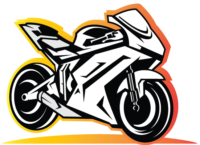[ad_1]

After almost 25 years of riding, I came to regard my enthusiasm for all things motorcycle as an infinite source of pleasure, but little did I know just how crucial one specific bike – a Honda Trail 125 – would be in helping me recover from the sickest point in my life.
The story begins on the morning of my scheduled Covid-19 vax in February 2021, when, as luck would have it, I awoke with flu-like symptoms. Testing revealed I was positive, so I began my mandatory two-week quarantine at home. It felt just like the flu – no big deal. But 17 days after that positive test – well after the flu symptoms had disappeared – a new wave of symptoms emerged which would change my life indefinitely.
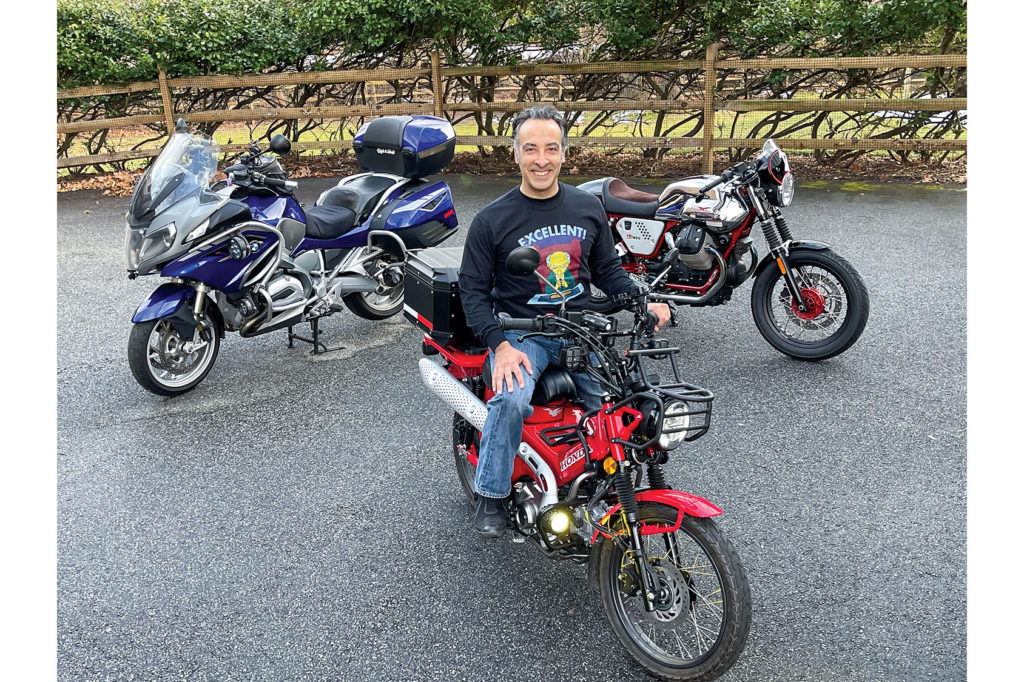
GOOD READ: “The Long Ride,” by Jamie Elvidge,
about a cleansing solo ride from NYC to Key West
Advertisement
The worst of them was extreme vertigo, an intense feeling of rapid dizziness, confusing disorientation, and a total loss of balance. Sometimes, moving half an inch in any direction would feel like falling off a tall building – my body would tense up, break out in a cold sweat, and then shake uncontrollably, which further exacerbated the vertigo. I was completely incapacitated, unable to perform even the simplest tasks autonomously.
Thus began the arduous journey back to normalcy, starting with learning how to walk again. It sounds farcical now, but walking speed was initially a challenge that took a solid week of practice to overcome. Stumbling forward at 2 mph felt more like warp speed, as my addled mind struggled to process motion like an old bogged down 386 computer. I had to stop every few feet to sustain my balance and reassure myself that, indeed, I was only walking! All the while, a persistent feeling of dizziness dominated every waking hour, punctuated by roiling headaches that could not be appeased.
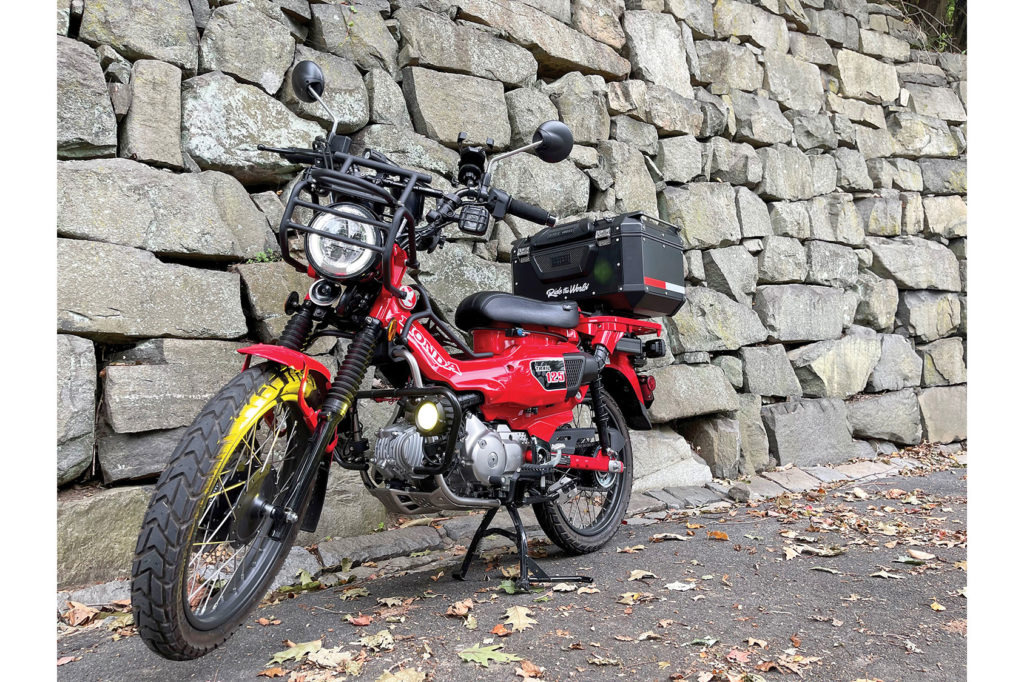
These migraines were always aggravated by barometric pressure in the atmosphere, so if it rained, I was completely out of commission. The only escape was sleep. When I closed my eyes, bright bursts of a hot white color would interrupt my rest, like lightning strikes but with more pronounced durations. Any sound, no matter how faint, would immediately wake me. A strange new sensitivity to light compounded the symptoms, making any surroundings other than a soundproof, pitch-black room unbearable. It was a depressing period, to say the least.
During this early stage of the disease, I’d often stagger down to the garage to gaze at my collection of motorcycles. Each one of them triggered an avalanche of memories, beckoning me to recall better times. “Remember all the states we’ve visited together?” queried my BMW R 1200 RT. “Don’t you miss the saucy growl of my small block V-Twin?” purred my Moto Guzzi V7 Racer. “Don’t forget the winter you took me all apart and got me running again!” commanded my Yamaha YSR50.

In those early post-infection days, the daydreaming in the garage vacillated between a resolute desire to get back in the saddle and a bleak hopelessness that I would never recover.
Over the course of the next few months, I graduated past walking and onto running, but only in spurts. I could drive my car again, albeit slowly. Eventually I dared to ride my motorcycles for short distances, if only to get the old juices flowing once more. But riding with “long Covid” symptoms was a profound handicap. The headaches and dizziness could burst like a thunderclap in my head, ferocious and debilitating.
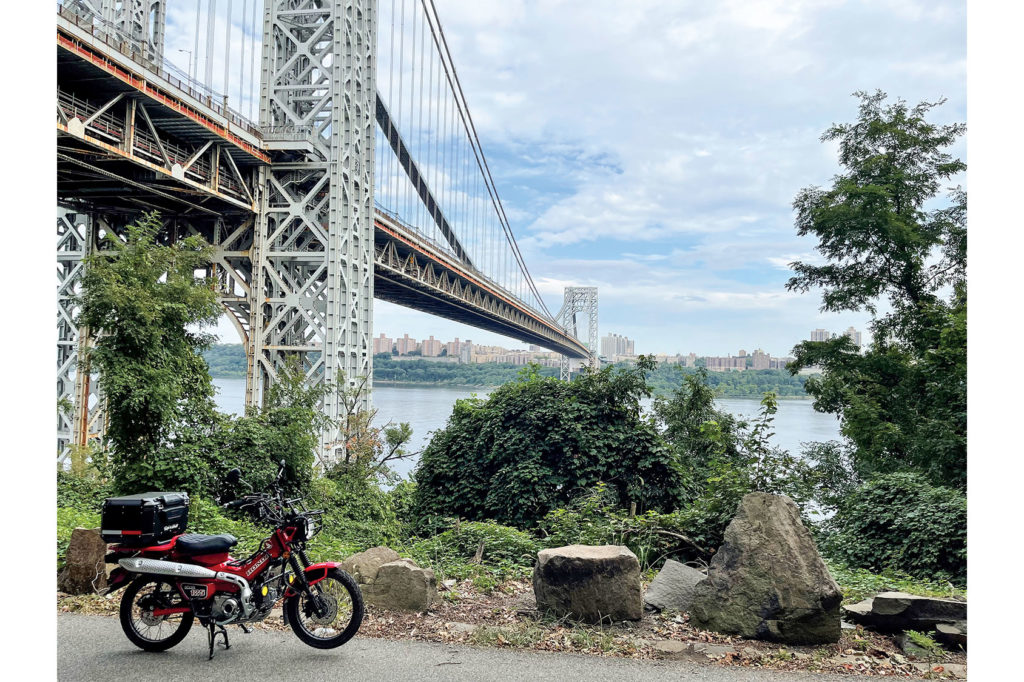
Most worrisome was the “brain fog,” which would appear suddenly, obliterating my ability to focus on anything for more than few seconds. It happened to me once while hustling my 600-plus-pound BMW RT through a mountain sweeper, where I wound up in the opposite lane facing oncoming traffic, unsure of how I got there. Other times, I would suddenly forget the basics, like which side of the handlebars the clutch lever was on. My brain was frustratingly dysfunctional.
Adding to these mental challenges were the physical trials. I’ve been riding successive generations of BMW’s venerable RT Series for over 15 years, but I suddenly felt intimidated by the size, weight, and speed of my 2015 R 1200 RT. Low-speed maneuvering was unsteady at best, and anything quick or technical scrambled my mental processing to the point of paralysis. It was a watershed period in my life.
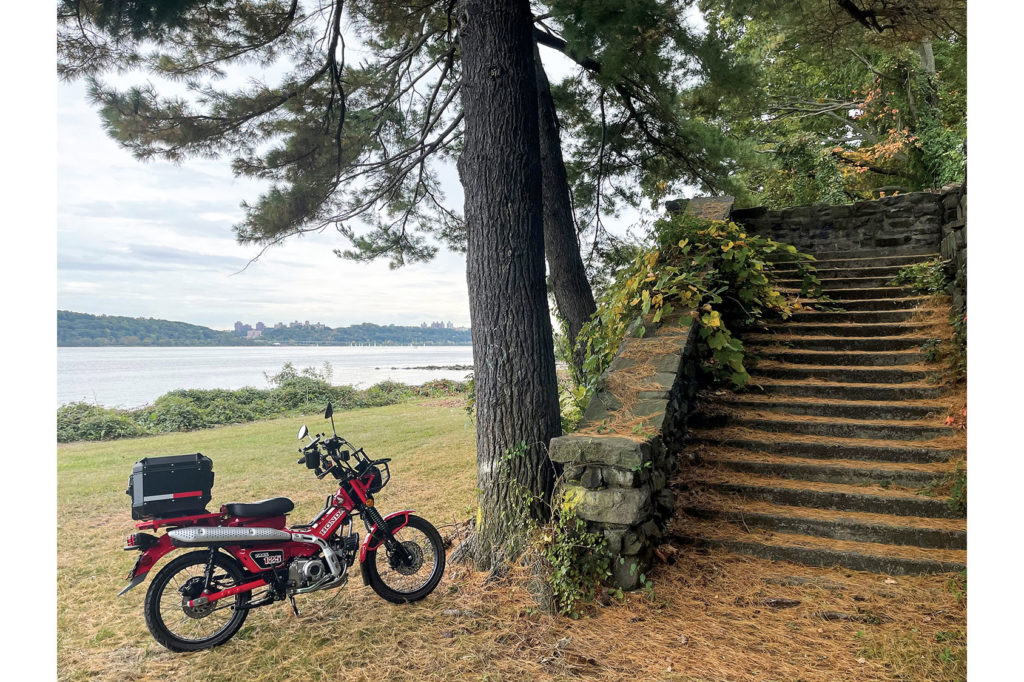
It took me many years of dedicated practice to achieve some modicum of riding proficiency, and it was exceedingly difficult for me to accept that many of my abilities had vanished. Riding my full-size motorcycles – once almost the most delightful activity I could imagine – had morphed into something nerve-wracking and dangerous. I knew I wanted to keep riding, but I had to slow down until my symptoms and skills both improved.
Since taming the twisties on my large-displacement bikes was out of the question, I had to find a way to pair what little was left of my riding skills with a suitable machine that was still a motorcycle. (In my mind, riding an automatic twist-and-go scooter would have been acquiescing to defeat.) Enter Honda’s Trail 125, Big Red’s rough-and-ready retro miniMOTO. Simple, lightweight, and slower than a tranquilized sloth, it was the perfect choice for my circumstance.
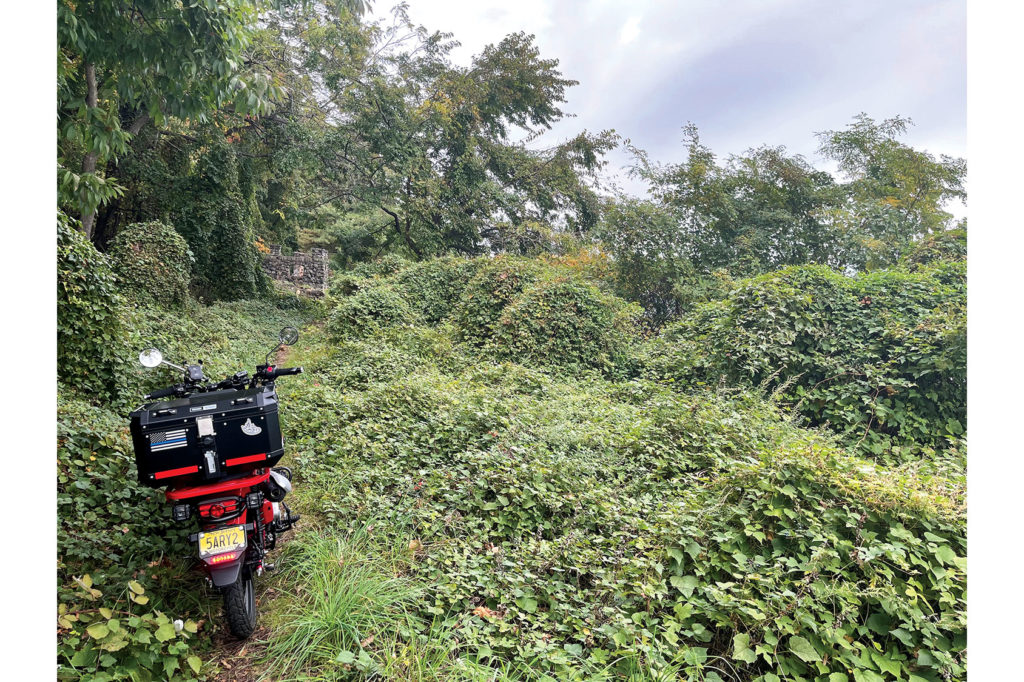
Through persistent searching, I nabbed one and headed off in search of slow lanes through local hamlets and forests. It was here, on these solitary explorations, that the Trail began to nurse me back to health.
Regardless of our diverse backgrounds and brand preferences, we all recognize the therapeutic value that motorcycles provide. Some refer to what the late psychologist Mihaly Csikszentmihalyi famously termed “flow,” or the mental state in which a person is fully immersed in the moment, completely focused and free from all discursive thoughts. The late Rush drummer Neil Peart described the feeling of moto-motion as a subconscious reminder of a mother gently rocking her baby. Every one of us who has swung a leg over the saddle has our own individual reasons why two-wheeled moving mediation therapy just plain works.
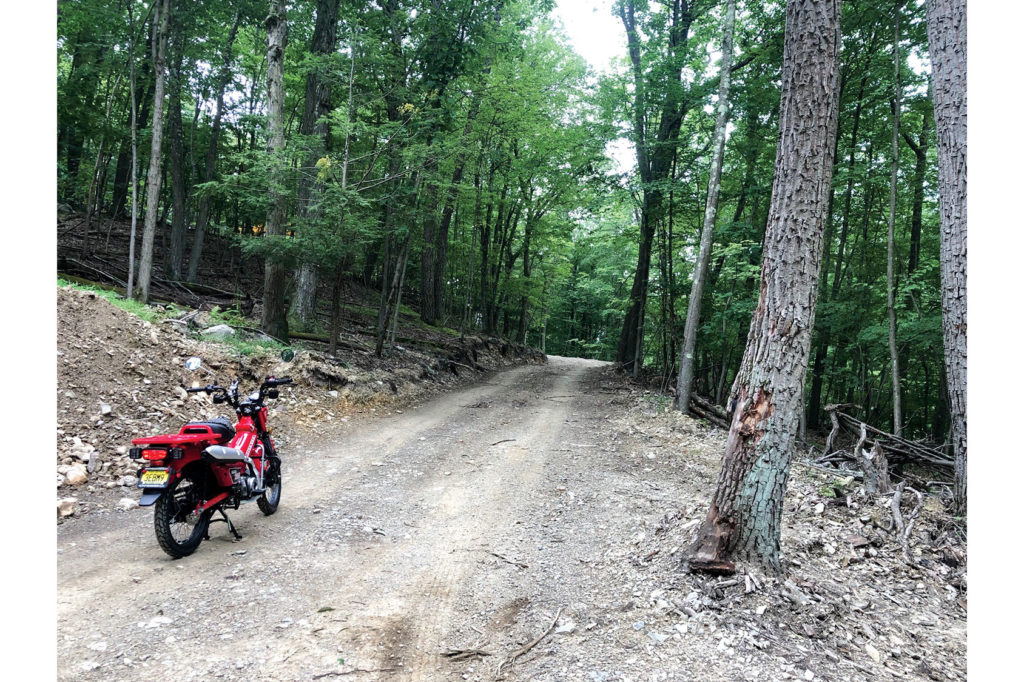
So it was for me on the Trail, ambling down rutted paths in the woods, scooting along serpentine bicycle paths, and focusing only on the basic rudiments of discovering how to ride again. Like relearning to walk, it was initially frustrating, but the diminutive Honda’s mellow personality encouraged me to just keep trying anyway. Wherever we were, it beckoned me to keep pushing: “Let’s go! Just a little further!”
Advertisement
It’s difficult to describe the character of an inanimate object, but the Trail never judged me for my mistakes the way my big bikes seem to do. We started out on local 40- to 50-mile loops, but before long, we were ripping through nearby states for 300- to 400-mile weekends. I felt like a real rider again, enthusiastically kicking the semi-automatic transmission through its four gears and unleashing all eight of the miniscule thumper’s stampeding horses as we bombed down the backroads.
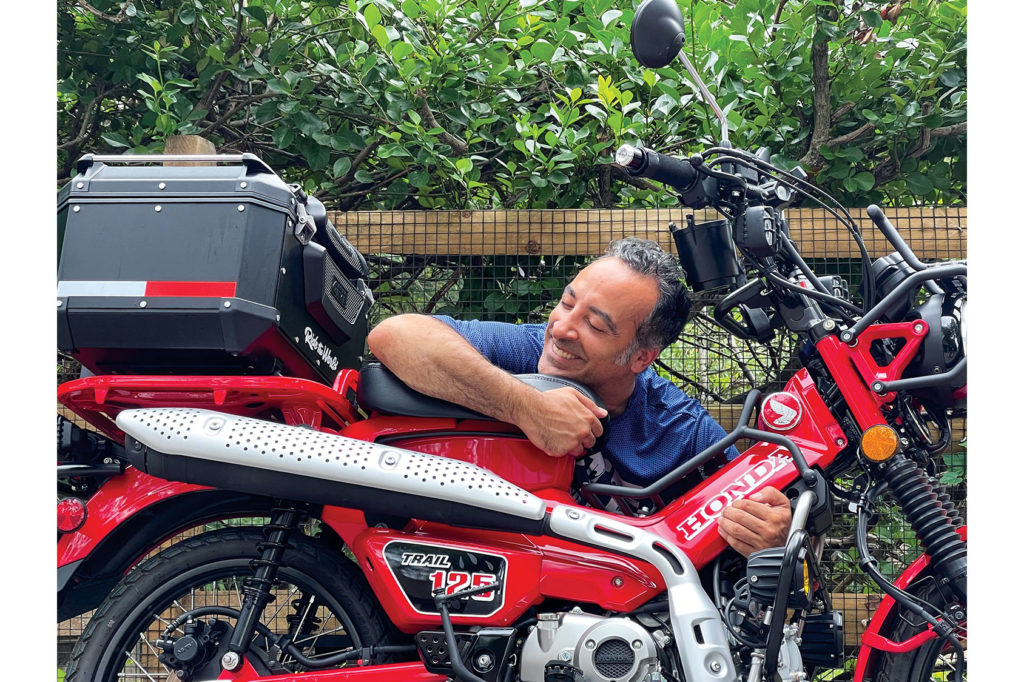
Granted, all this action was despairingly slow by objective standards – but it was engaging in the way that only a real motorcycle can be. This continuous engagement is what rebuilt my ability to focus on a singular task for prolonged periods of time – the very foundation of riding well. Thanks to the eager Trail, I was still in the game, still moving forward, and gradually building my confidence back up. According to the GPS, I never exceeded 59 mph on the modest Honda, but in terms of fun, I might as well have been leading the pack around the Isle of Man TT!
Encouraged by the progress, I outfitted my Trail with accoutrements to increase functionality and add some flair to its spartan workhorse aesthetic. A cavernous Givi 58-liter top case provides ample storage, while a cushy aftermarket seat, a wireless phone charger, auxiliary LED lighting, an Opmid gauge cluster, and toasty Koso Apollo heated grips make for a more comfortable traveling experience.
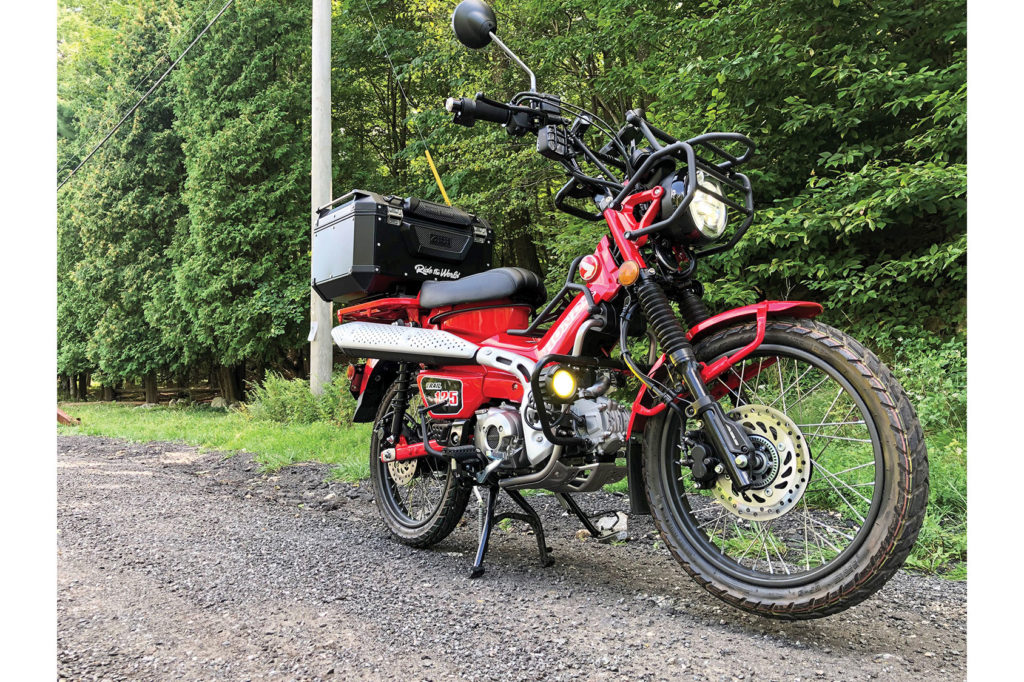
Molding this Trail as uniquely my own cemented the bond between man and machine almost as much as our rides themselves did. Ultimately, I’m certain I wouldn’t have recovered so far, so fast, without this bright red miniMOTO as a willing partner.
Today, I accept that Covid-19 has impaired me, perhaps permanently. My innate senses, mental processing, and physical reaction times still aren’t what they used to be, but I’m confident that over time they can be restored. Indeed, these days I find myself mixing in more rides on my full-sized motorcycles as I relearn how to pilot them competently again.
In the meantime, I want to sincerely thank Honda for imbuing this spunky little Trail with character – one that brings all the essential healing joys of wind therapy to the beginner and expert alike, even if it is in the slow lane.
[ad_2]
Subscribe to our weekly newsletter below and never miss the latest product or an exclusive offer.
